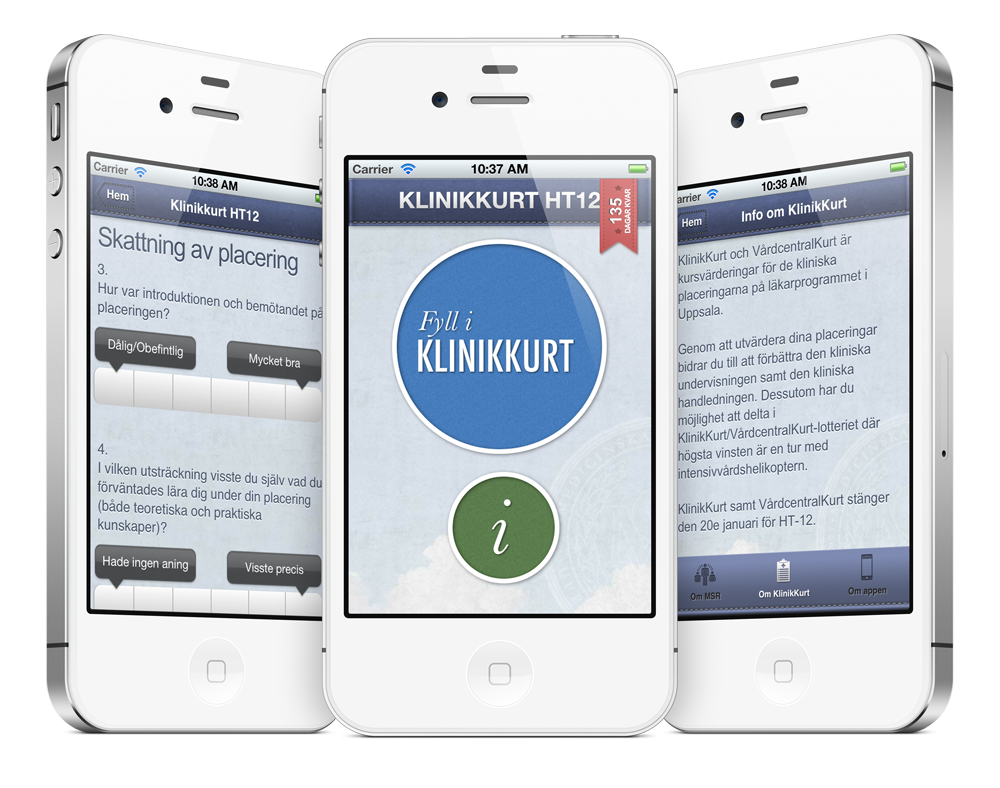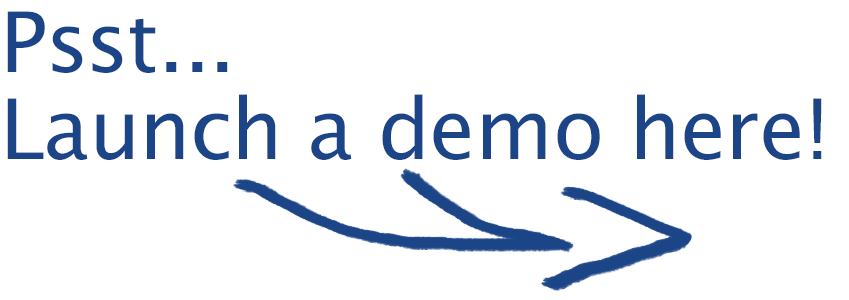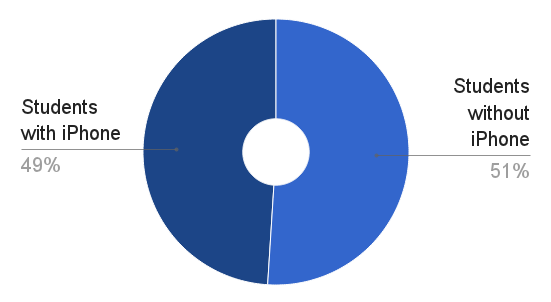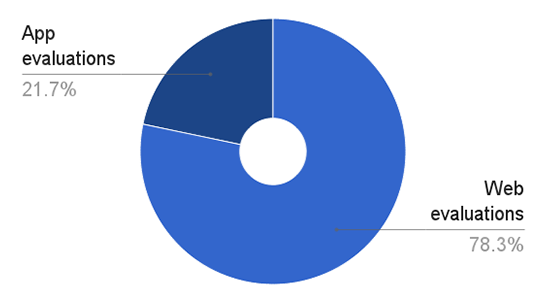
|
Authors | Institution |
|
Jesper Hessius Medical Student Niclas Lewisson MD Jakob Johansson MD, PhD Contact Details Jesper Hessius: Hessius@me.com |
Faculty of Medicine Uppsala University Department of Surgical Sciences Uppsala University Department of Surgical Sciences Uppsala University |
 |
|
||||||
| Using a Mobile Application as a Supplemental Tool for Student Evaluations - Adding iEvaluation to e-Evaluation |
In 2012, we developed a mobile application (app) for the iOS platform enabling students to access our clinical teaching assessment instrument using their smartphone. It is not yet known if application-based evaluation is a useful addition to web-based evaluation.
The assessment instrument, a web-based questionnaire of 10 questions (Likert scale 1–6) and text box for comments, was ported to a mobile app. The app was launched for the autumn semester of 2012 for third- to fifth-year medical students at Uppsala University (Sweden). Evaluations submitted through the app were compared to those submitted through the website.


Lewisson N, Hellgren L, Johansson J. Quality Improvement in Clinical Teaching through Student Evaluations of Rotations and Feedback to Departments. In press in Medical Teacher
Approximately 49 % of the students in the study owned an iPhone at the end of the semester. Out of 1734 submitted evaluations 21.7 % were submitted using the app (n=376) versus 78.3 % submitted through the website (n=1358). Female students were more prone to evaluate using the app (female: 25 % versus male: 17 %) (p<0.001).


No difference in mean ratings±SD was observed between app evaluations (4.30±1.12) and web evaluations (4.36±1.08) (p=0.38). The distribution of ratings on the scale (1-6) was similar in both groups. The prevalence of free text comments did not differ between app evaluations (49 %) and web evaluations (53 %) (p=0.16).
Hint: Click me to switch graph!
Evaluations submitted through a mobile application did not differ in mean ratings or prevalence of free text comments compared to web evaluations.
Mobile app-based evaluation appears to be a useful addendum to web-based instruments.
 Send Email
Send Email